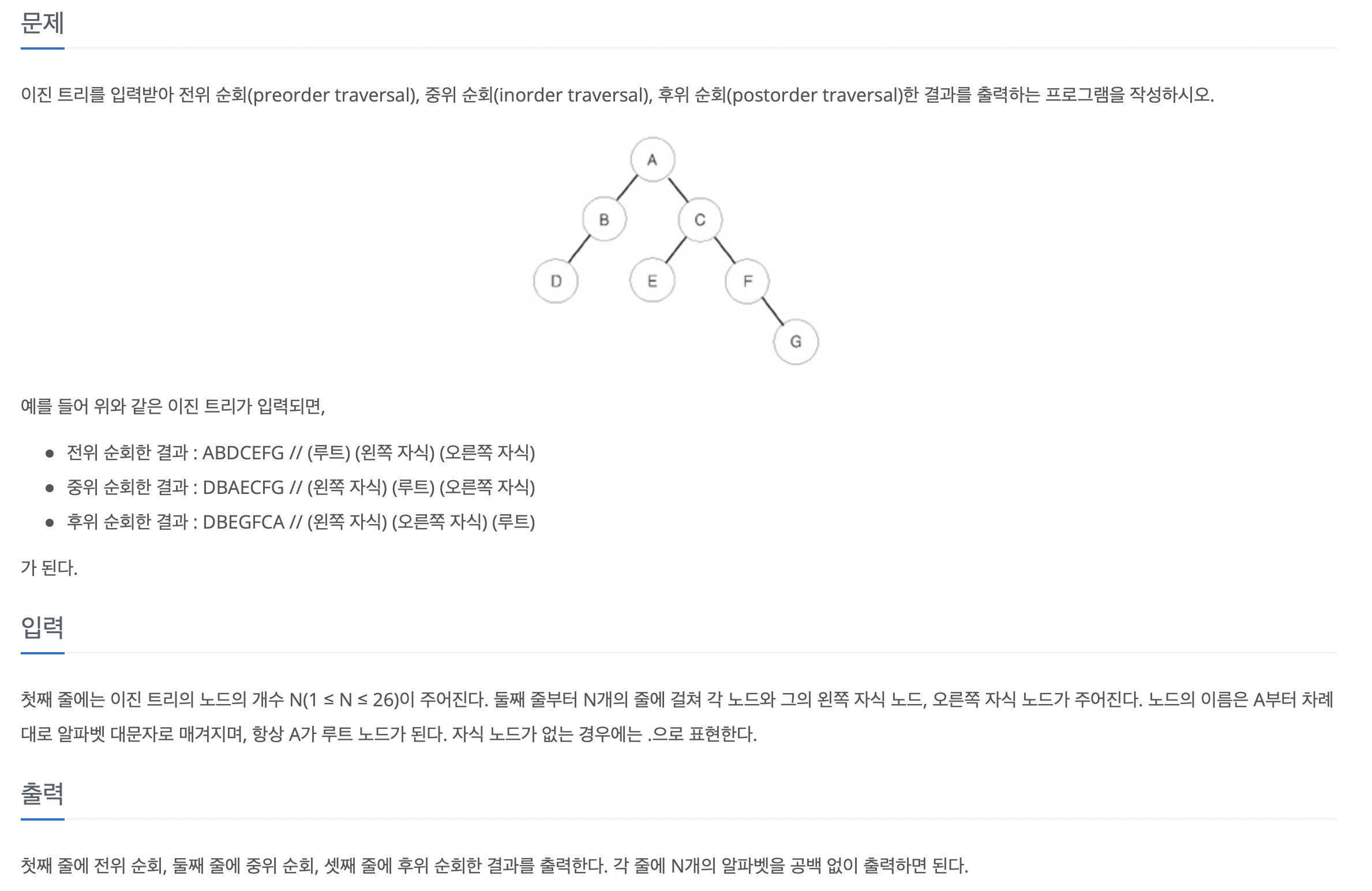문제

코드
#include <iostream>
#include <unordered_map>
using namespace std;
int N;
void preorder(unordered_map <char, char>& left, unordered_map <char, char>& right, char node){
if (node == '.') return;
cout << node;
preorder(left, right, left[node]);
preorder(left, right, right[node]);
}
void inorder(unordered_map <char, char>& left, unordered_map <char, char>& right, char node){
if (node == '.') return;
inorder(left, right, left[node]);
cout << node;
inorder(left, right, right[node]);
}
void postorder(unordered_map <char, char>& left, unordered_map <char, char>& right, char node){
if (node == '.') return;
postorder(left, right, left[node]);
postorder(left, right, right[node]);
cout << node;
}
int main(void){
cin.tie(0);
ios_base::sync_with_stdio(false);
unordered_map <char, char> left, right;
char p, l, r;
cin >> N;
for (int i = 0; i < N; i++){
cin >> p >> l >> r;
left[p] = l; right[p] = r;
}
preorder(left, right, 'A'); cout << endl;
inorder(left, right, 'A'); cout << endl;
postorder(left, right, 'A');
return 0;
}접근
이 문제는 left, right child를 나눠서 저장한 것이 핵심이었다. 전위, 중위, 후위 순회를 재귀로 구현하는 것은 큰 문제가 아니었고 오히려 이를 어떻게 저장해서 재귀함수에서 활용할 것인가가 문제였는데 unordered_map을 통해 해결할 수 있었다.
